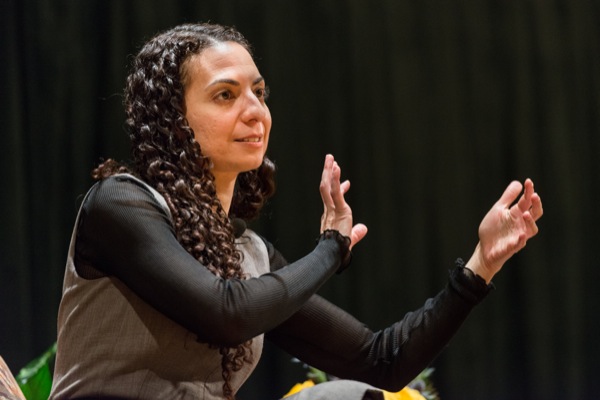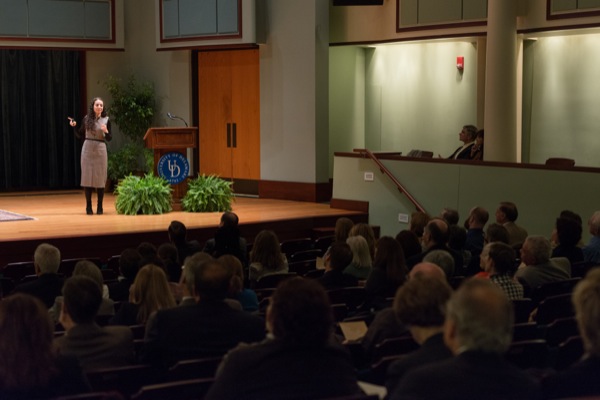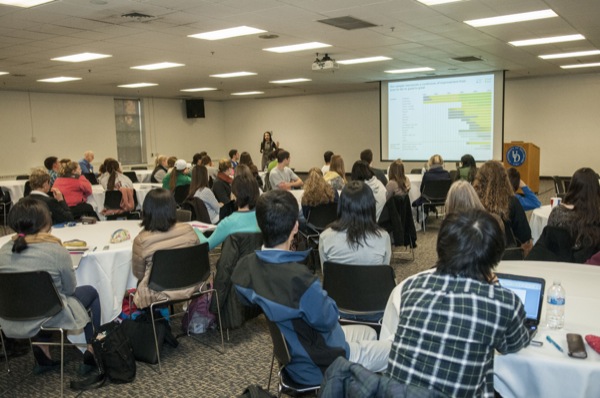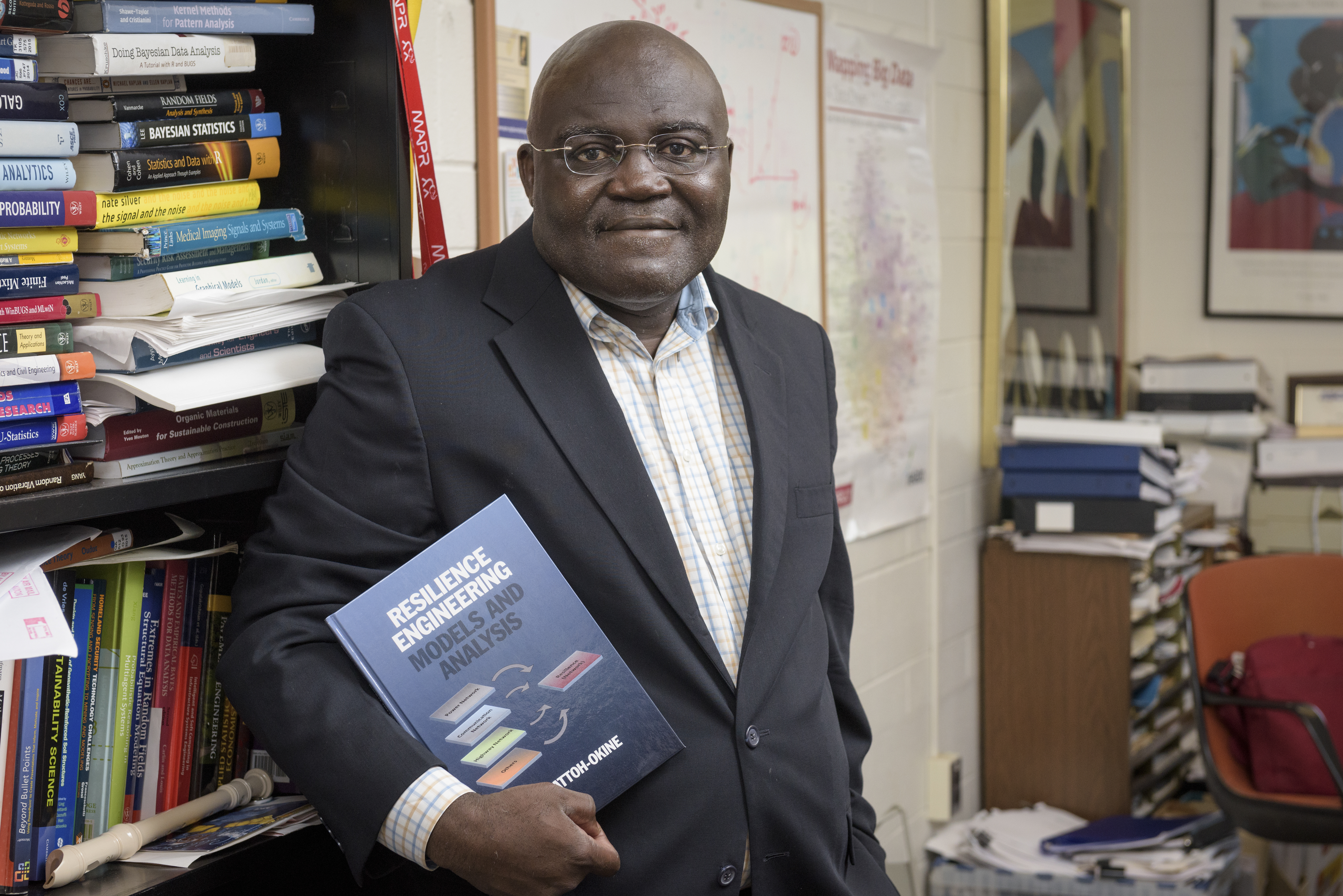


Education and employment
Global education practice leader Mourshed delivers Leadership Lecture
10:54 a.m., Nov. 11, 2013--Mona Mourshed believes that when it comes to training and providing jobs for the next generation, employers, education providers and young people seem to be living in parallel universes separated by disparate policies, structures and attitudes.
Mourshed, director of Global Education Practice at McKinsey and Company, shared research from “Education to Employment: Designing a System That Works,” a report coauthored with Diana Farrell and Dominic Barton, during a University of Delaware President’s Leadership Series talk held Tuesday, Nov. 5, in the Gore Recital Hall of the Roselle Center for the Arts.
People Stories
'Resilience Engineering'
Reviresco June run
University President Patrick Harker welcomed Mourshed as the coauthor of three groundbreaking reports on education-to-employment, and on the top performing and fast improving school systems worldwide.
“They’re the benchmark for this kind of research, and they’ve sent her around the globe sharing her findings, and helping organizations and nations replicate success,” Harker said. “She’s led projects in Asia, Europe, South America, the Middle East and the U.S., supporting school systems and vocational and higher education providers to improve student skills, chances of finding a job and self-sufficiency and success.”
The challenge of creating a working dialog between those who hire, those who teach, and those about to enter the workplace is one of the most pressing issues of our times, Mourshed said.
“If you open a newspaper in any given country on any given day, you will find an article that talks about employers who can’t find the people that they need,” Mourshed said. “You also read about frustrated young people who feel they have done all the things that everyone asked them to do and cannot find a job, or they find themselves working in positions that are absolutely unrelated to what they trained to do.”
The “Education to Employment” report addresses the ways in which a country successfully moves its young people from education to employment, identifying challenges and noting which interventions work and how can they be scaled up to provide solutions at the global level.
“We surveyed more than 4,500 youths, 3,000 employers and 1,000 postsecondary education providers,” Mourshed said. “We studied more than 100 approaches in 25 countries.”
The report noted that 75 million youth are unemployed, half of youth are not sure that their postsecondary education has improved their chances of finding a job, and almost 40 percent of employers say a lack of skills is the main reason for entry-level vacancies, Mourshed said.
“One-third of education providers are unable to estimate their job placement rates, and those who do are not optimistic,” she said. “One-third of employers never communicate with providers. The core issue is that education providers and employers are just passing in the night.”
Adding to the frustration of youth is the fact that, for the most part, they are not well informed when making educational choices, Mourshed said.
“You have to ask if there is a motivation for young people to use information about what they study,” Mourshed said. “When we asked students why they chose not to enroll in postsecondary schools, they said it was because they could not afford to do so.”
When it comes to making educational choices, young people and parents need to be aware of the skill demands and educational background needed to pursue rewarding and decent paying entry level positions.
“We need to convince young people and their parents that it is about the profession first,” Mourshed said. “One way that professions attract young people is by showing them that there is a training program that will help them to grow job skills.
Successful programs, Mourshed said, also are marked by a willingness of educational providers and employers to step into each other’s world.
“Education providers need to be proactive and reach out to all the main employers and work very intensively together,” Mourshed said. “This has to happen every day.”
The program concluded with a question and answer session moderated by Nancy Karibjanian, vice president of Delaware First Media who also is an adjunct faculty member in UD’s Department of Communication.
There also was a UD connection to the event, as the report cited by Mourshed is the work of alumnus Tom Isherwood. Isherwood, who works as a senior project manager for the McKinsey office in Dubai, led the McKinsey team on the multi-nation survey/data analysis presented by Mourshed.
A reception followed the presentation.
Making good school systems greater
In his introductory remarks, Harker noted that Mourshed had done double duty by speaking with students in the UD’s School of Education and the English Language Institute earlier in the day.
During the early afternoon program, held in the Perkins Student Center, Mourshed discussed “How the World’s Fastest Improving School Systems Keep Getting Better.”
The 2012 McKinsey and Company report, coauthored with Chinezi Chijioke and Michael Barber, analyzed 20 systems worldwide, each with improving but differing levels of performance. The report documents how the noted systems achieved significant, sustained and widespread gains in student outcomes measured by international and national assessments.
“We wanted to answer the question about how do you help school systems go from poor to fair, fair to good, and good to great,” Mourshed said. “The reality is that there are only a handful of schools systems that can claim to have gone from poor to good to greater. We looked at which aspects of these success stories are universal, and which are context-specific.”
The approach followed a two-step process to select schools cited in the report, starting with identifying those who have achieved significant gains in student outcomes on international assessments from 1980 onward.
Systems with sustained improvement include those in Singapore, Hong Kong, England, Chile and Jordan, while U.S. school systems recognized include Aspire Public Schools, Long Beach, Calif., and Boston.
“A system can make significant gains from any starting point, and systems at all performance levels can improve substantially in as short as six years,” Mourshed said. “It’s not the case that we need to think about school system improvement taking decades before we see fruits. The evidence suggests otherwise.”
Mourshed also noted that systems must continue to evolve their selected interventions and that there is a direct correlation between a system’s performance level and the degree of tightness of central control over its school process.
“We identified that there are certain clusters, dominant clusters of intervention, in each of these performance strains,” Mourshed said.
Trying to emulate what works for movement from good to great could actually be detrimental for systems trying to move from poor to fair, she said.
“When you are in a poor to fair system, there are a couple of things that are true. One is that teachers are struggling to teach, and that teaching is viewed as an extremely low-prestige profession,” she said. “There is very little support for professional development, with pre-service and in-service training being minimal.”
Mourshed’s talk also included a question and answer portion, with queries ranging from different interventions used in moving from lower to higher performance levels and differences between the role of structure and process in system development.
“Structure changes the way a system works,” Mourshed said. “Process changes the way the process works.”
Article by Jerry Rhodes
Photos by Evan Krape and Doug Baker












